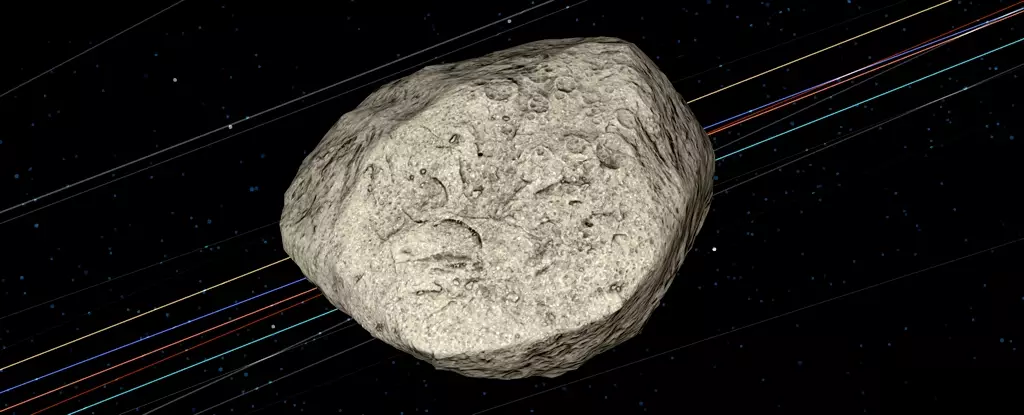The cosmos is a theater full of dramatic encounters, where celestial bodies behave in ways both predictable and startling. One such player in this galactic drama is asteroid 99942 Apophis, named after the ancient Egyptian god representing chaos and darkness. While current assessments suggest that Apophis poses no threat to Earth during its close approach in 2029, the interaction could unleash significant consequences for the asteroid itself. Recent research conducted by a team of planetary scientists including Ronald Ballouz has illuminated the possibility that Earth’s gravitational influence during this close approach could reshape Apophis, revealing fascinating insights into the nature of near-Earth asteroids.
Discovered in 2004, Apophis quickly garnered attention due to early estimates that suggested a potential collision with Earth could occur in April 2029. The implications of such an event sent ripples of panic through the scientific community and the public alike, inviting scrutiny on how we prepare for celestial threats. As researchers closely monitored its trajectory, subsequent analyses indicated that the feared collision was a false alarm—a significant relief since Apophis will fly by at a safe distance of around 32,000 kilometers (20,000 miles). Nevertheless, the incident raises broader questions about our understanding of asteroid behavior and the potential alterations they may undergo from such close encounters.
Asteroids like Apophis possess surfaces that are both loose and highly variable, hinting at a distinct relationship of these bodies with their environment. Notable evidence from previous studies suggests that near-Earth asteroids frequently lack the weathering signs typically associated with long-term exposure to the solar environment. This anomaly signals that factors other than time are at play, leading Ballouz and his team to theorize that interactions with Earth could substantially rejuvenate these celestial bodies.
To unpack this theory, the researchers modeled Apophis’s flyby using sophisticated simulations that considered the potential physical structure of the asteroid. Apophis may be bi-lobed, akin to the asteroid Itokawa, which impacts how gravitational forces might rearrange its surface. Thus, in the wake of its close passage, a flurry of seismic activities could shake Apophis, reshaping its landscape post-encounter.
Evidence points toward immediate and longer-term effects resulting from the gravitational interaction with Earth. During its swift passage, the asteroid could experience rapid seismic jolts—akin to an earthquake—prompting significant surface alterations. Interestingly though, these seismic events may remain detectable from Earth-based instruments, presenting an exceptional opportunity for scientists to gather data about the processes at play during a near-Earth flyby.
In terms of longer-term effects, the gravitational forces exerted on Apophis during the flyby may catalyze a gradual change in its rotation. As this asteroid drifts through the solar system with a new spin, it could pave the way for surface material to migrate, stirring up layers that had remained static for millions of years. This rejuvenation process raises intriguing questions about the longevity and evolution of asteroids like Apophis, and whether life forms, albeit different from what we know, could emerge in these environments over eons.
Caught in our modern web of technology, the 2029 flyby of Apophis presents an extraordinary chance for scientists to observe a near-Earth asteroid in unprecedented detail. The best part? It may even be visible to the naked eye, providing a rare spectacle for space enthusiasts and the general public alike.
As astronomers prepare for this cosmic rendezvous, they remain hopeful that this encounter will not only yield critical insights into asteroids but also serve as a delightful reminder of our place within the universe. Studying Apophis when it comes near may offer glimpses of the processes shaping our solar system, while also underscoring the importance of understanding the celestial bodies that share our cosmic neighborhood.
While the asteroid 99942 Apophis poses no threat to Earth, its flyby in 2029 will undoubtedly be a transformative event. The potential for significant surface change combined with the opportunity for in-depth observation points to a future where celestial encounters may reveal the secrets of asteroids—objects that hold ancient history yet remain somewhat of a mystery themselves. Let us hope that as Apophis journeys past, it departs as a curious traveler, forever altering the narrative surrounding both itself and those of us on Earth who watch in awe.

